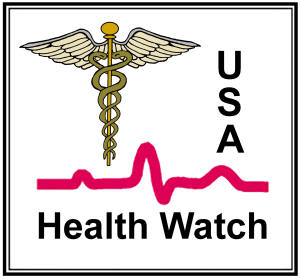
Jan. 24, 2023
Impact of COVID-19 Immune Dysfunction
on Antibiotic Resistant Bacteria- PACCARB Presentations
Dr. Kevin Kavanagh gives a short discussion regarding the impact of
immune dysfunction caused by COVID-19 and its impact on antibiotic
resistant organisms. It is stressed that exposure needs to be prevented
and similar to the protocols used by the Veterans Health Administration
system, surveillance and contact precautions are of utmost importance.
PACCARB Oral Comment Jan. 24, 2023.
https://youtu.be/8QYfp7KSd20
Download Written Comment
====================================================================
As the committee is aware, the CDC has reported1 an increase in
antibiotic resistant infections during the COVID-19 pandemic, including
Candida auris, Group A and B Streptococcus, Salmonella and ESBL
resistant Enterobacterales. There is even a more concerning increase in
resistance in hospital onset infections, including Candida auris, CRE,
ESBL resistant Enterobacterales, Vancomycin Resistant Enterococcus, drug
resistant Pseudomonas and MRSA.
There is concerning evidence that the rise this resistance will be
compounded by a lasting immune dysfunction produced by COVID-19.2 The
recent surge in hospitalizations from the respiratory syncytial virus in
the United States exemplifies this problem. Not widely reported by the
lay press, the United States, Germany and Sweden had large RSV surges
last year, shedding significant doubt on the “immune debt” hypothesis.
Sweden also had very little masking and few closures during the
pandemic. Immune dysfunction from COVID-19 is also supported by clinical
studies and abundant laboratory evidence.
A non-peer reviewed study observed almost a 100% increased risk of RSV
infections in COVID-19 patients. 9.7% of children who did not have an
RSV infection had a documented COVID-19 infection, this contrasts with
19.2% of children who developed an RSV infection that had a documented
COVID-19 infection.3 Another study found a 34% increased risk of
Streptococcal tonsillitis in COVID-19 patients compared to controls.4
The best prevention is to mitigate patient exposure to the drug
resistant pathogen. Screening and surveillance must become a leading
strategy upon which others are added. In the case of hospital onset MRSA
infections, private sector healthcare in the United States experienced
approximately a 17% increase above their 2010-2011 baseline; as the
Veterans Health Administration, with a uniform strategy of surveillance
and contact precautions, experienced a 83.6% decrease.5
We need to remember that no matter how high risk a patient is, one will
only become infected to a drug resistant pathogen if one is exposed to
it.
References:
1. 2022 Special Report COVID-19. Centers for Disease Control and
Prevention. Jan. 16, 2023.
https://www.cdc.gov/drugresistance/pdf/covid19-impact-report-508.pdf
2. Kavanagh KT. Immunodysfunction, a Cause of Stealth COVID-19 Illness &
Deaths. Infection Control Today. Jan. 17, 2022.
https://www.infectioncontroltoday.com/view/immunodysfunction-a-cause-of-stealth-covid-19-illness-death
3. Wang L, Davis PB, Berger NA, et al. Disruption in seasonality,
patient characteristics and disparities of respiratory syncytial virus
infection among young children in the US during and before the COVID-19
pandemic: 2010-2022. MedRxiv. Nov. 29, 2021,
https://www.medrxiv.org/content/10.1101/2022.11.29.22282887v1
4. Mizrahi B, Sudry T, Flaks-Manov N, et al., Long covid outcomes at one
year after mild SARS-CoV-2 infection: nationwide cohort study. The BMJ.
January 11, 2022.
https://www.bmj.com/content/380/bmj-2022-072529
5. Kavanagh KT, Cormier LE, Success and failures in MRSA infection
control during the COVID‑19 pandemic. Antimicrobial Resistance and
Infection Control. Sept. 25, 2022.
https://aricjournal.biomedcentral.com/articles/10.1186/s13756-022-01158-z
All information contained on this website is the express opinion /span>
of the presentor and not necessarily that of
Health Watch USA Inc. a Kentucky Non-Profit Organization
The Video Above is a Health Watch USAsm Video.
Health Watch USA is a non-profit 501-C3 Organization based in Kentucky